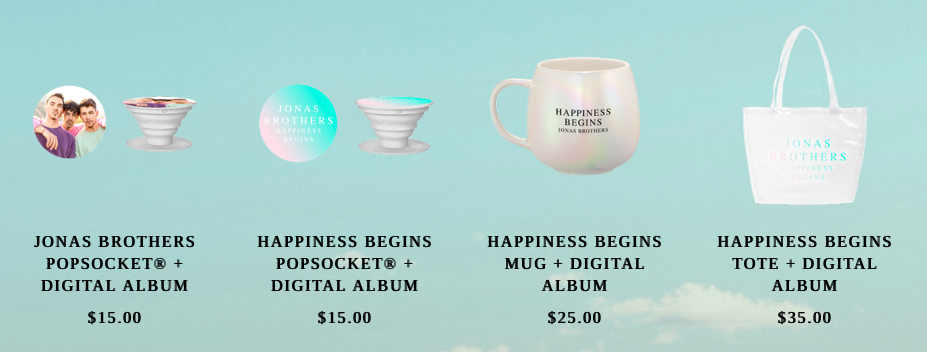
It’s been a while, but I’m back to talk about album bundles –because artists and labels are doing everything they can to seize chart positions and earn RIAA statuses.
I’m not going to get into specifics of what constitutes an album bundle because it’s been exhausted.
Instead, I want to take you back to a different time.
A time where bundling an album with a t-shirt or poster meant having a CD, including it in package, and mailing that package to the buyer.
The idea of bundling comes from a time period where creating an album had unavoidable physical cost. If I was making shirts for $7.00 a pop and creating CDs for $1.50 a piece, I needed to make sure that the t-shirt sold at a price that exceeded my expenses, and that the CD was selling for at least the Published Price to Dealer or Suggested Retail Price. The money paid out to performers and writers relied on selling the album at an agreed upon price, and undervaluing the CD affected artist and label revenue.
Now, let’s come back to the present.
The breakdown of units sold overwhelmingly skews towards stream-equivalent sales.
People just really aren’t buying albums –and for good reason.
$9.99/one album v. $9.99/every album.
It’s just not viable for the vast majority of music consumers to buy every new project they are interested in, and that’s why “pure sales” are lower than ever. Even for huge artists.
That isn’t the issue itself however. The issue is that bundling rules have not caught up with this paradigm shift.
Earning album sales from bundle purchases came from an era before digital distribution. Now, rather than sending fans a CD, artists can merely email a redemption code or send an email with the album attached.
These bundles still count as “sales,” but fans don’t really have a choice between buying merchandise on its own or receiving it with a digital copy of the album.
Go to Ariana Grande’s website.
Go to the Jonas Brother’s website.
You can’t buy a product without buying an album, and that’s the game.
Desiree Perez (COO @ Roc Nation), in the New York Times piece above, hit it right on the head:
“We dispute [Billboard’s] decision [to not include his bundles as sales] on behalf of DJ Khaled and, frankly, every artist who is forced to navigate bundling an album download with an inexpensive item that still effectively represents their brand,” Ms. Perez said in a statement. “It’s confusing and demeaning to the art.”
It is demeaning to the art because these charts are supposed to reflect music consumption. These charts are are supposed to have their fingers on the pulse of what people are listening to and what albums people are buying.
Instead, these bundle wars have left artists and labels scrambling to game the system. You can create a collaboration with a hot brand, tailor it to your album, and sell merchandise that inflates your sales without actually proving people want to listen to your music.
I could not agree more with Desiree’ statement. Why should t-shirts, stickers, and phone cases count towards traditional sales? It makes no sense.
These current rules propagate shady marketing situations where artists try to use energy drinks to increase albums sales or situations where artists strike deals with major brands to buy their albums and give them away.
Yes, this is innovative marketing. Yes, these artists are still finding a way to sell themselves, but at the end of the day, if the Billboard charts are supposed to be a metric of what’s being listened to and what albums are doing the best, is it fair to count album “sales” that are forced down fans’ throats?